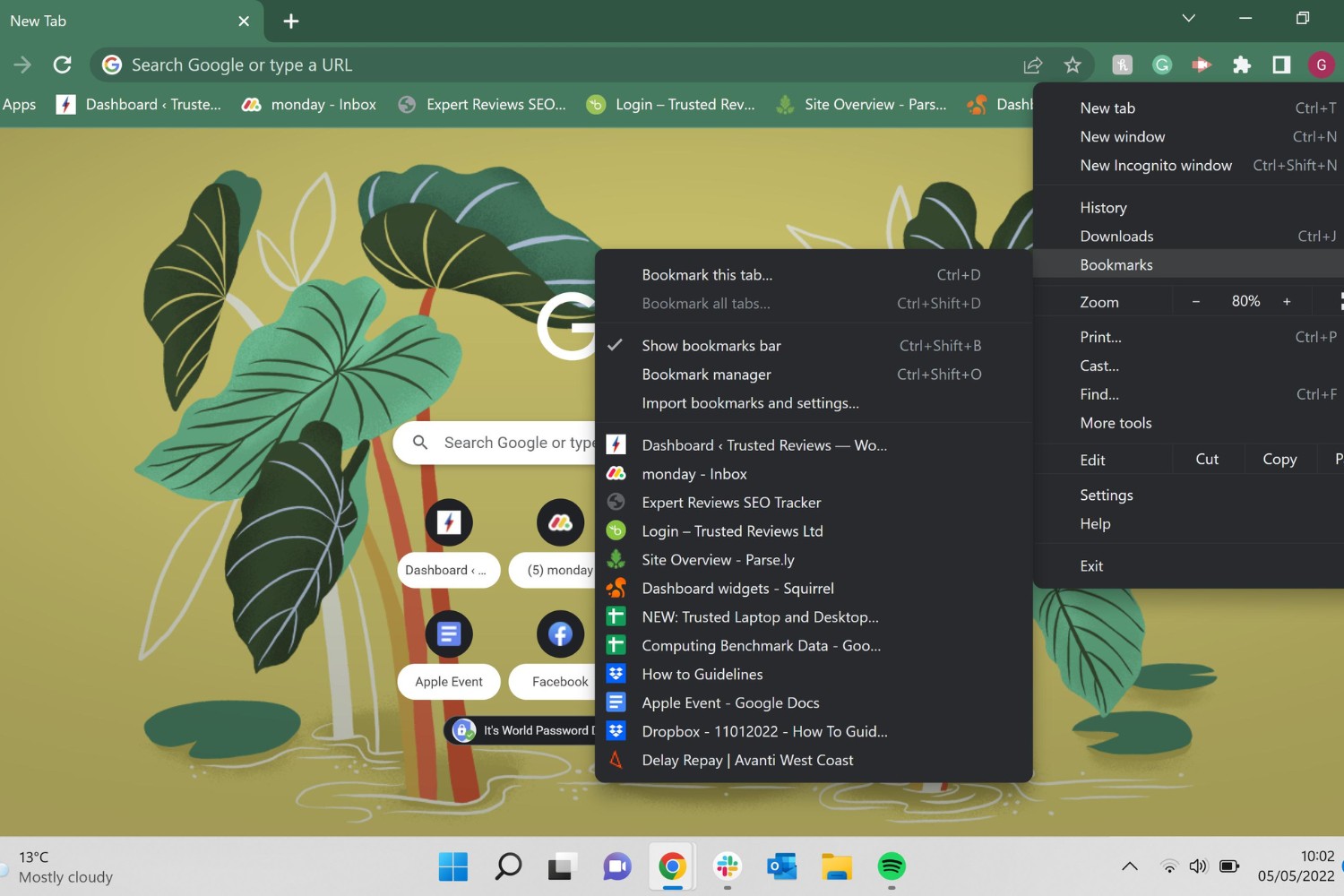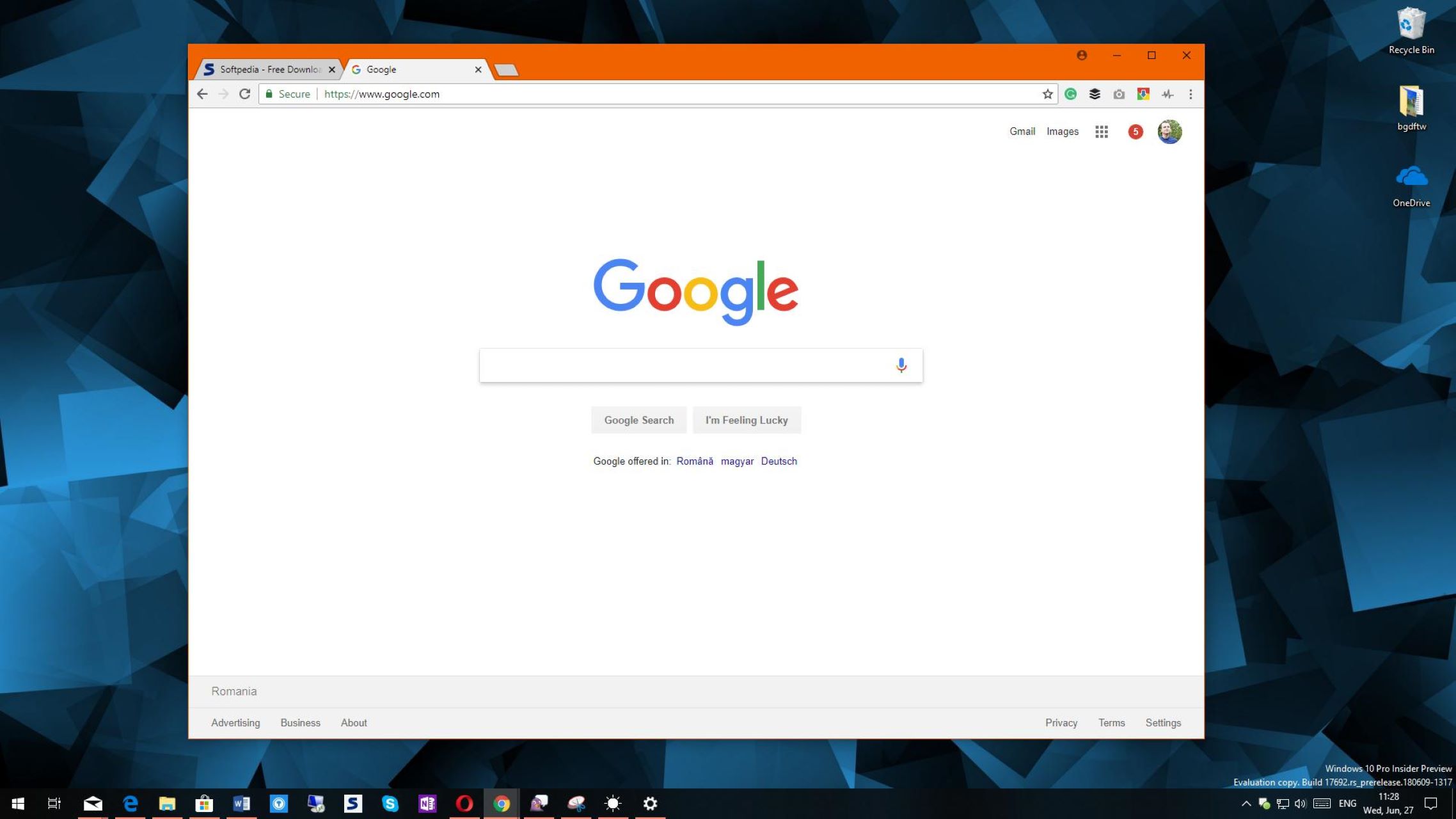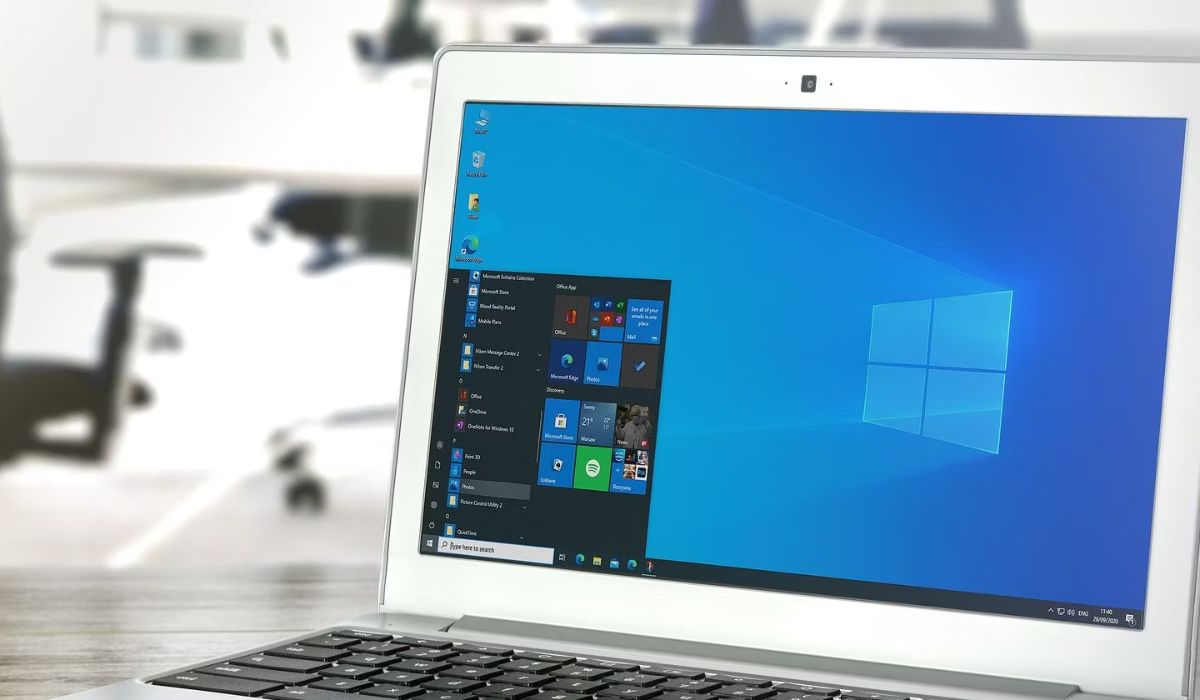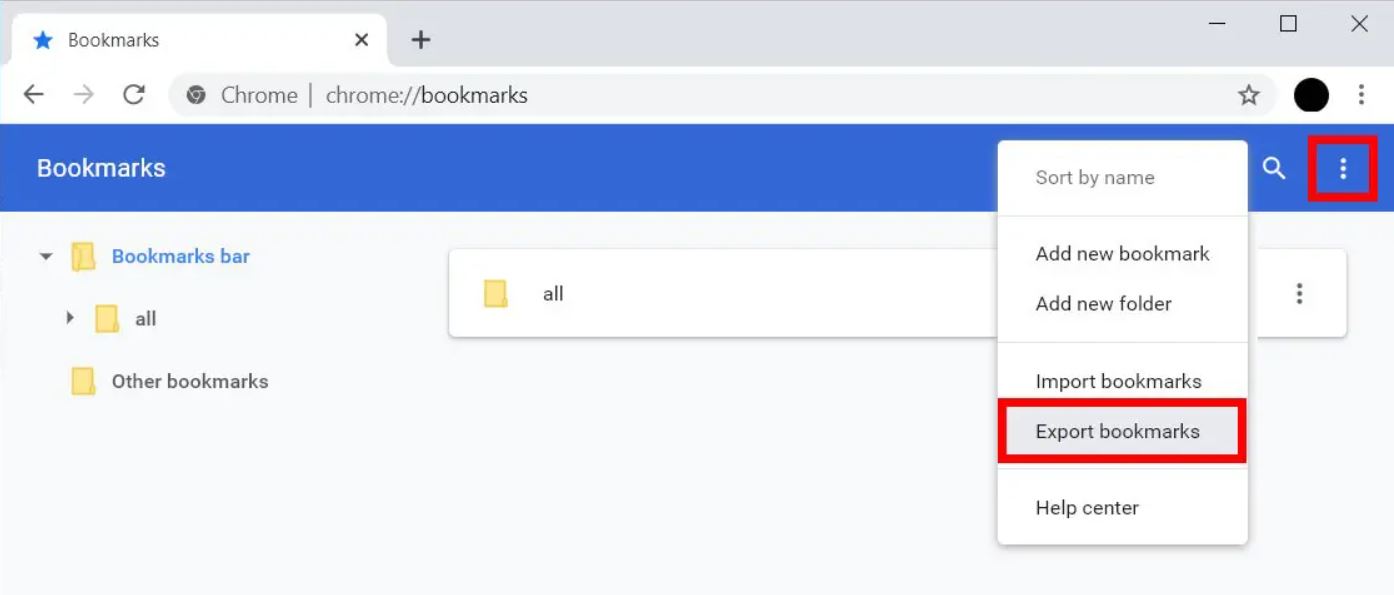Introduction
Google Chrome is one of the most popular web browsers, known for its speed, simplicity, and user-friendly interface. One of its key features is the ability to save and organize bookmarks, allowing users to easily access their favorite websites with just a click. However, many users often wonder where Chrome bookmarks are stored on their Windows 10 computers. Understanding the location of these bookmarks is crucial, especially when it comes to backing up and restoring them or accessing them outside of the browser.
In this article, we will delve into the intricacies of locating, accessing, backing up, and restoring Chrome bookmarks on a Windows 10 system. By gaining a comprehensive understanding of where these bookmarks are stored and how to manage them, users can ensure the safety and accessibility of their valuable bookmarked websites. Whether it's for safeguarding against data loss or transferring bookmarks to another device, knowing the ins and outs of Chrome bookmarks on Windows 10 is essential for a seamless browsing experience.
So, let's embark on a journey to uncover the hidden pathways where Chrome bookmarks reside within the Windows 10 environment. By the end of this article, you will have the knowledge and confidence to navigate through the intricacies of managing Chrome bookmarks, empowering you to take full control of your browsing experience.
Locating Chrome Bookmarks in Windows 10
Locating Chrome bookmarks in Windows 10 involves understanding the file path where these bookmarks are stored. By default, Google Chrome saves bookmarks in a specific location on the local drive, allowing users to access and manage them directly from the file system. To begin the journey of locating Chrome bookmarks in Windows 10, users can follow these steps:
-
Open File Explorer: Start by opening the File Explorer on your Windows 10 computer. This can be done by clicking on the folder icon in the taskbar or by pressing the Windows key + E on the keyboard.
-
Navigate to the AppData Folder: Chrome bookmarks are stored within the user's profile in the AppData folder. To access this folder, follow the path: C:\Users\YourUsername\AppData\Local\Google\Chrome\User Data\Default. Replace "YourUsername" with your actual Windows username.
-
Locate the Bookmarks File: Within the "Default" folder, you will find a file named "Bookmarks." This file contains all the bookmarks and bookmark folders saved in Google Chrome. It is an essential component of Chrome's profile and holds the key to accessing and managing bookmarks outside of the browser.
-
Understanding the Bookmarks File Format: The "Bookmarks" file is in JSON format, which stands for JavaScript Object Notation. This format allows for structured data storage and is commonly used for various types of data, including bookmarks, in web browsers.
-
Accessing Bookmarks Backup: Additionally, within the same directory, there is a "Bookmarks.bak" file, which serves as a backup of the bookmarks. This backup file can be useful in the event of accidental deletion or corruption of the main bookmarks file.
By following these steps, users can successfully locate the Chrome bookmarks file on their Windows 10 system. Understanding the file path and format is crucial for various tasks, including backing up and restoring bookmarks, as well as accessing them outside of the browser. With this knowledge, users can confidently navigate through the intricacies of managing Chrome bookmarks, ensuring a seamless and organized browsing experience.
Accessing Chrome Bookmarks File
Accessing the Chrome bookmarks file is a crucial aspect of managing and manipulating bookmarks outside of the browser. The bookmarks file, named "Bookmarks," contains a structured record of all saved bookmarks and bookmark folders, utilizing the JSON (JavaScript Object Notation) format for data storage. This format allows for easy parsing and manipulation of the bookmark data, providing users with the flexibility to access and modify their bookmarks directly from the file system.
Upon locating the "Bookmarks" file within the user's Chrome profile directory, users can access it using a text editor or specialized JSON viewer. Opening the file reveals a structured hierarchy of bookmarked websites, each represented by a set of key-value pairs that include the site's URL, title, and other relevant metadata. This structured format enables users to view and edit their bookmarks in a human-readable form, offering insights into the organization and content of their bookmarked websites.
Accessing the Chrome bookmarks file directly from the file system provides users with several advantages. It allows for manual editing and organization of bookmarks, offering a level of control and customization beyond what the browser interface provides. Users can rearrange bookmarks, rename them, or even add new ones by directly modifying the JSON data within the "Bookmarks" file. This level of granular control empowers users to tailor their bookmark collection to suit their browsing habits and preferences.
Furthermore, accessing the bookmarks file facilitates the extraction and migration of bookmarks to other browsers or devices. By understanding the structure of the JSON data, users can export their bookmarks to a different browser or import them into another Chrome installation on a separate device. This capability is particularly valuable when transitioning to a new computer or browser, ensuring that valuable bookmarked websites are seamlessly transferred without the need for manual re-entry.
In addition to manual manipulation and migration, accessing the bookmarks file is essential for troubleshooting and recovery purposes. In the event of a browser malfunction or data loss, having direct access to the bookmarks file enables users to restore their bookmarks from a backup or perform targeted repairs to the bookmark data. This level of accessibility and control over the bookmarks file empowers users to safeguard their valuable bookmarked websites and ensure uninterrupted access to their curated collection.
In essence, accessing the Chrome bookmarks file provides users with a deeper level of engagement and control over their bookmarked websites. By understanding the structure and location of the bookmarks file, users can leverage its flexibility for manual organization, migration, and recovery, ultimately enhancing their browsing experience and ensuring the safety of their valuable bookmarked content.
Backing Up Chrome Bookmarks
Backing up Chrome bookmarks is a critical practice that ensures the safety and preservation of valuable bookmarked websites. By creating a backup of the bookmarks file, users can mitigate the risk of data loss due to unforeseen circumstances such as system errors, browser issues, or device failure. This proactive approach to data management empowers users to safeguard their curated collection of bookmarked websites, providing peace of mind and the ability to restore their bookmarks in the event of an unexpected loss.
To initiate the process of backing up Chrome bookmarks, users can start by locating the "Bookmarks" file within the Chrome profile directory on their Windows 10 system. Once the file is identified, creating a backup involves making a copy of the "Bookmarks" file and storing it in a secure location, separate from the original file. This simple yet crucial step ensures that a duplicate of the bookmarks data is readily available for restoration purposes, should the need arise.
The backup of Chrome bookmarks serves as a safety net, preserving the user's meticulously organized collection of bookmarked websites. In addition to protecting against data loss, the backup file enables users to transfer their bookmarks to a new computer or browser seamlessly. Whether migrating to a different device or setting up a new browser installation, having a backup of the bookmarks file streamlines the process, eliminating the need to manually recreate the entire bookmark collection.
Furthermore, backing up Chrome bookmarks provides users with the flexibility to experiment with browser settings and configurations without the fear of losing their valuable bookmarked websites. It empowers users to explore new browser versions, perform system upgrades, or experiment with different browser profiles, knowing that their bookmarks are securely preserved in the backup file. This freedom to explore and customize the browsing experience is made possible by the assurance of a reliable bookmarks backup.
In essence, backing up Chrome bookmarks is a proactive measure that safeguards against data loss, facilitates seamless migration, and empowers users to explore and customize their browsing experience with confidence. By creating and maintaining regular backups of the bookmarks file, users can ensure the longevity and accessibility of their curated collection of bookmarked websites, enhancing their browsing experience and providing a safety net for their valuable online resources.
Restoring Chrome Bookmarks from Backup
Restoring Chrome bookmarks from a backup is a straightforward yet invaluable process that empowers users to recover their curated collection of bookmarked websites in the event of data loss or browser issues. By leveraging the backup of the bookmarks file, users can seamlessly restore their valuable bookmarks, ensuring uninterrupted access to their favorite websites and preserving the organizational structure they have meticulously crafted.
To initiate the restoration process, users can begin by accessing the backup of the Chrome bookmarks file, typically named "Bookmarks.bak," located within the same directory as the original "Bookmarks" file. This backup file serves as a snapshot of the bookmarked websites at a specific point in time, providing a reliable source for restoring lost or corrupted bookmarks.
Once the backup file is identified, users can proceed to restore their Chrome bookmarks by following a few simple steps. The restoration process involves replacing the current "Bookmarks" file with the backup file, effectively reverting to the state captured in the backup. This can be achieved by renaming the existing "Bookmarks" file to "Bookmarks.old" for safekeeping and then renaming the "Bookmarks.bak" file to "Bookmarks," effectively replacing the current bookmarks file with the backup.
Upon completing these steps, users can relaunch Google Chrome, and their restored bookmarks will be seamlessly integrated into the browser, reflecting the organizational structure and content captured in the backup file. This straightforward restoration process ensures that users can regain access to their valuable bookmarked websites without the need for manual re-entry or reconstruction.
The ability to restore Chrome bookmarks from a backup provides users with a safety net against unforeseen data loss, browser issues, or system errors. It offers peace of mind, knowing that their curated collection of bookmarked websites is safeguarded and can be readily recovered when needed. Additionally, the restoration process enables users to maintain continuity in their browsing experience, ensuring that their favorite websites are always within reach, regardless of unexpected circumstances.
In essence, restoring Chrome bookmarks from a backup is a pivotal capability that ensures the preservation and accessibility of valuable bookmarked websites. By understanding the straightforward process of leveraging the backup file, users can confidently navigate through potential data loss scenarios, knowing that their curated collection of bookmarks can be seamlessly restored, preserving their browsing experience and organizational efforts.

























